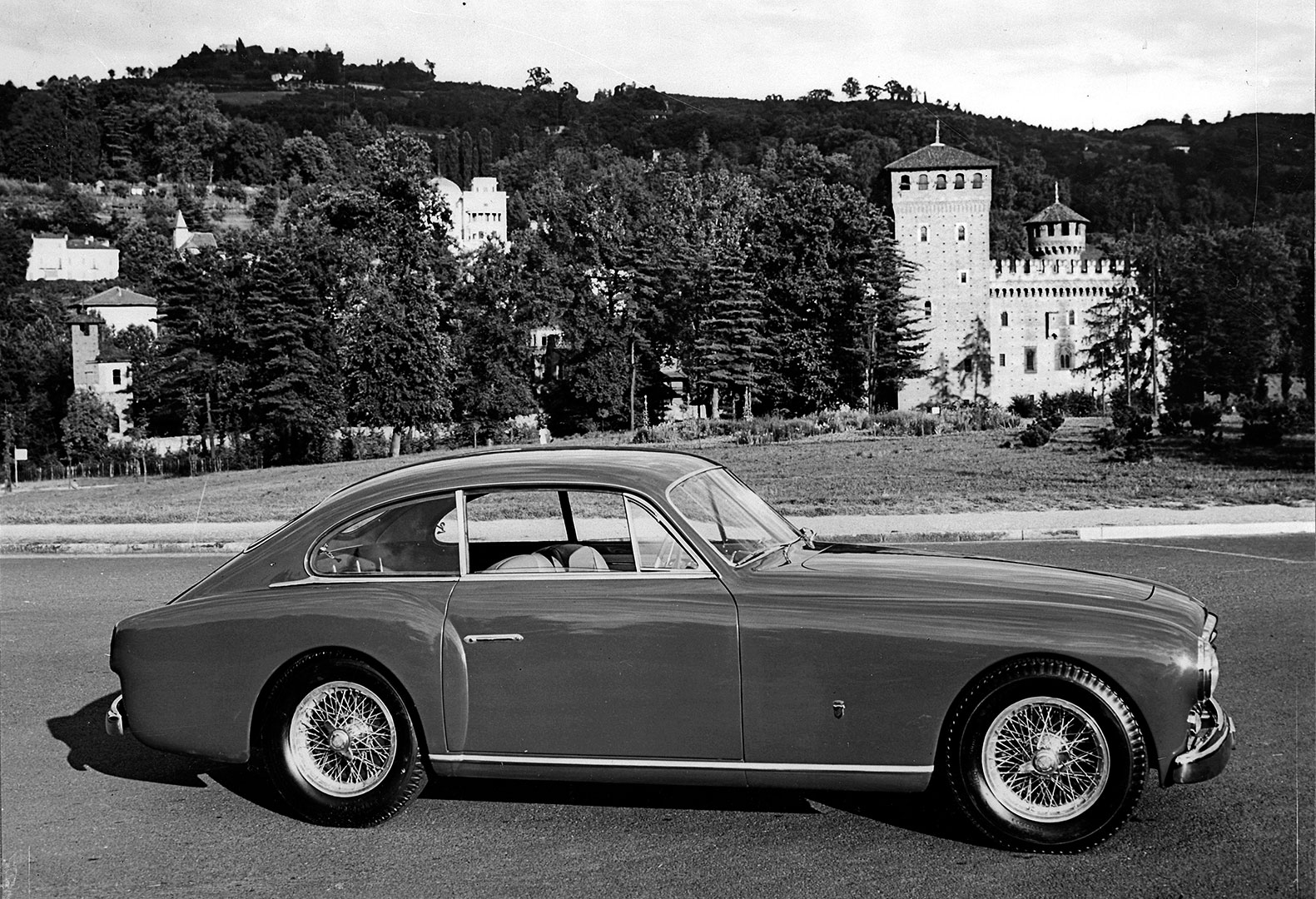?width=1920&height=1600)
Ferrari 212 Inter
The Gioacchino Colombo V12 was bored out to provide a bigger displacement. The chassis was inspired by that of the 166 MM, with modifications aimed at transmitting the higher power output to the road. The later versions saw the introduction of a tubular chassis known as the ‘Tuboscocca’, which increased structural rigidity.

The chassis
Apart from Touring and Vignale (stylistically, the most successful at interpreting this chassis), both the Turin-based Rocco Motto coachworks and Fontana from Padua tried their hand at bodying this model.
The 212 series of cars were built between late 1950 and 1953, in Inter and Export model configuration. The former was the road model, and the latter ostensibly the competition model.
The Inter road version was the most prolific of the early series of production cars manufactured by Ferrari, with the greatest variety of body styles, with berlinetta, cabriolet and coupé variants. The styles even varied significantly within the examples produced by a single coachbuilder, notably those from the Vignale design studio.
This series of cars carried coachwork by Ghia, Ghia Aigle, Pininfarina, Stabilimenti Farina, Touring, Vignale, and even the British firm Abbott produced a rather ungainly cabriolet, that has long since been re-bodied in the style of a Touring barchetta.

The Export competition versions carried even chassis numbers on a 2250 mm wheelbase chassis normally with an E or ED suffix to the number, whilst the Inter road models were constructed on a 2600 mm wheelbase chassis in the odd number road car sequence, initially with an EL suffix, and then with an EU suffix. At least that is the theory, but some examples that are obviously road cars from their design and equipment carry even chassis numbers, exemplifying the dual purpose nature of the Ferrari production of the time.
Up to this point the standard steering layout had been right-hand drive, in the racing tradition, but approximately midway through 1952 the 212 Inter series started to become equipped with left-hand drive as standard, obviously to make them more practical, as this was the normal steering position in the majority of markets in which they were sold. The last Stabilimenti Farina bodied car was built on a 212 Inter chassis.
This model also saw the beginnings of a long-term liaison with Pininfarina, with their first coachwork renditions on a Ferrari chassis, which were somewhat conservative when compared to the more flamboyant offerings from Vignale, but were the start of establishing a homogeneous identity for the Ferrari marque as the company moved into greater road car production numbers.


The engine

- V12ENGINE
- 2562.51 ccTOTAL DISPLACEMENT
- 110 kWMAXIMUM POWER @ 6500 rpm
- 200 km/hTOP SPEED
- Typefront, longitudinal 60° V12
- Bore/stroke68 x 58.8mm
- Unitary displacement213.54cc
- Total displacement2562.51cc
- Compression ratio7.5 : 1
- Maximum power110 kW (150 hp) at 6500 rpm
- Power per litre58hp/l
- Maximum torque-
- Valve actuationsingle overhead camshaft per bank, two valves per cylinder
- Fuel feedsingle Weber 36 DCF carburettor
- Ignitionsingle spark plug per cylinder, two coils
- Lubricationwet sump
- Clutchsingle-plate
- Frametubular steel
- Front suspensionindependent, unequal-length wishbones, transverse leaf spring, Houdaille hydraulic shock absorbers
- Rear suspensionlive axle, semi-elliptic springs, Houdaille hydraulic shock absorbers
- Brakesdrums
- Transmission5-speed + reverse
- Steeringworm and sector
- Fuel tankcapacity 105litres
- Front tyres6.40 x 15
- Rear tyres6.40 x 15
- Typecoupé, cabriolet, 2+2 or two-seater
- Length-
- Width-
- Height-
- Wheelbase2600mm
- Front track1278mm
- Rear track1250mm
- Weight1000 kg (dry, coupé)
- Top speed200km/h
- Acceleration 0-100 km/h-
- 0-400 m-
- 0-1000 m-
- chassis
- engine
- Technical Details